

Contributor
- Topics: Archive, Plants You Need, Sustainable Gardening
 [sidebar] This story first appeared in the APLD CA newsletter in March 2017[/sidebar]
[sidebar] This story first appeared in the APLD CA newsletter in March 2017[/sidebar]
The APLD Bay Area District is proud to promote the watershed approach to landscaping. It works for every landscape and specifically employs residential landscapes to capture, clean, and collect the rain that lands on the roof and drains through even the smallest yard. Plants in these landscapes serve multiple environmental functions beyond mere aesthetics. They build habitat, hold soil and water with their roots, improve soil structure, capture and store atmospheric carbon, and bring beauty and order to the landscape. As designers, we strive to select plants that are adapted to the local climate zone and to use local native plants whenever possible. These low-water workhorses deliver all of these benefits while helping you make the most of the natural rains that fall on your landscape. And when they do require irrigation, they are able to thrive on low-water inputs. Below you will find some favorite climate-appropriate plants of Bay Area APLD members.
As designers, we strive to select plants that are adapted to the local climate zone and to use local native plants whenever possible. These low-water workhorses deliver all of these benefits while helping you make the most of the natural rains that fall on your landscape. And when they do require irrigation, they are able to thrive on low-water inputs. Below you will find some favorite climate-appropriate plants of Bay Area APLD members.
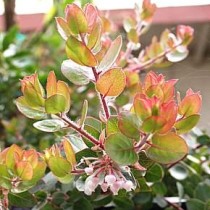
Janet Enright • Janet Enright & Associates •
San Jose, CA • jegardens@aol.com
- Laurus nobilis ‘Saratoga’, Saratoga Bay Laurel: This is one of my go-to plants for skinny planting spaces, and great as a back drop. Years ago, Barrie Coate recommended this in its standard form planted 4’ on center to screen a two-story house. Easily pruned on a flat plane without losing its essence; plays well with lots of other plants.
- Frangula (Rhamnus) ‘Leatherleaf’, Leatherleaf Coffeeberry: I also love ‘Mound San Bruno,’ which I use a lot, but I’m equally in love with Leatherleaf. Darker, more brooding aspect – I love its dark green, solid mass.
- Rhaphiolepis umbellata ‘Minor’, Dwarf Yeddo Hawthorne: When I’m looking for a neat, clean, evergreen chunk in a slim space, this is one of the favorites.
- Arctostaphylos ‘John Dourley’, John Dourley Manzanita: I’ve been looking for something in the Arctostaphylos, low water, mid-range height – like honestly 2 to 3-ish feet. This one is creeping up on me. Lovely orange-ish tinge to the tips of the leaves.
- Rhus integrifolia, Lemonade Berry: I first saw this plant as a clipped hedge on an APLD tour at Santa Barbara Botanic Garden and gushed about it. I don’t clip it, although I should think about using it that way. I use it with impunity in areas heavily frequented by deer. Fabulous as a hedge that fades into the background and is elegant with substance.

Janet Cohen • Honest Gardens •
Walnut Creek, CA • honestgardens.com
- Anigozanthos ‘Ruby Velvet’, Ruby Velvet Kangaroo Paw: I love the hefty grass like texture of this plant, and the gorgeous deep red of the flowers.
- Correa ‘Wyn’s Wonder’, Variegated Australian Fuchsia: This is just a lovely subtle plant that looks great in various light levels. It’s a bit neater in part shade, but it’s great for a continuity plant in a garden that has both shady and sunny areas. Sweet little coral pink bell flowers in winter when nothing much else is blooming.
- Nandina domestica ‘Lemon Lime’, Lemon Lime Nandina: I’ve only put this in two gardens so far but it’s doing really nicely. It’s a lovely bright green in part shade, and so far the deer have been leaving it alone in even the toughest locations. Good size too, around 3.5 feet high and wide.
- Pedilanthus bracteatus, Slipper Plant: I first saw this plant at our booth at the San Francisco Flower and Garden Show, and just loved the way it looked with the uplights. Since then I’ve used it in front of screens and behind benches with great effect. It has a great vertical presence. It’s not in WUCOLS but Mountain States lists it as low water use, and that’s been my experience as well.
- Pennisetum spathiolatum, Slender Veldt Grass: This is such a sweet small grass with great flowers. I love the way it looks in front of a wall or along a creek bed.
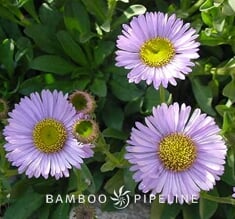
Patricia St. John, APLD • St. John Landscapes •
Berkeley, CA • stjohnlandscapes.com
- Correa ‘Wyn’s Wonder’, Variegated Australian Fuchsia: Wonderful transitional plant, low growing to 2 to 3 feet tall, up to 4 to 5 feet wide. Knits the elements in the landscape and adds a lightness to the darker greens with its variegated white and green leaves. Deer resistant and low water use, and its dusty red tubular blooms feed the hummingbirds in winter.
- Coprosma kirkii ‘Variegata’, Variegated Mirror Plant: Another great “transitional/bridge plant” that can knit sloping soil, with its 6 to 24 inch height and up to a 5 foot spread. It has white-edged grey-green small leaves, and trails gracefully in rock gardens, on walls and in hanging baskets. Low water use and deer resistant.
- Lomandra confertiflora ‘Seascape’, Seascape Mat Rush: It is actually not a grass—looks can be deceiving—it is in the asparagus family! I love using it with everything else: succulents, shrubs, and perennials, in large swaths or in a single file. Can take full sun to full shade, very low water use, no deer predation on its fine weeping grey/green leaves up to 2 feet tall and wide. It’s perfect near a dry streambed or nestled amongst boulders.
- Erigeron glaucus ‘Wayne Roderick’, Seaside Daisy: CA native, great as a border plant, low, mounding evergreen (blue-green leaves and stems) with bright pink/lavender daisy like flowers 1 ½ to 2 inch heads blooming in spring and summer. It grows to about 8 inches high with 12 inch spread, tolerates full sun or light shade. Low water use, attracts butterflies and deer resistant.
- Santolina virens ‘Lemon Fizz’, Cotton Lavender: Brings a bright touch of chartreuse to the garden with its rough, finely divided yellow-green fragrant leaves (yellower in full sun) and needs little water. Grows to 18 inches tall with a 2 foot spread. Give it good drainage or put it in a container. Will be happy in full sun, part to mostly shade. Graced with bright yellow button flowers in summer.

Carol Vander Meulen, APLD • VvMDesigns •
Livermore CA • VvMDesigns@comcast.net
- Kniphofia ‘Christmas Cheer,’ Christmas Cheer Poker Plant: My favorite winter focal point. Striking 3 to 4 foot plumes of bright color to brighten the garden November–February. Can pair with other spring and late summer-blooming varieties to bring poker like blooms year round. Favorite of hummingbirds.
- Elaeagnus ×ebbingei ‘Gilt Edge’, Gilt Edge Silverberry: Wonderful background shrub with variegated leaves; brighten partial shade gardens but thrives in full sun as well. Adds year round color structure and interest.
- Bulbine frutescens, Stalked Bulbine: Long-blooming perennial border plant. Spear-shaped succulent leaves about 1 foot tall with yellow/orange bloom 3 to 6 inches above. Creates 2 to 3 foot clumps as permanent edges for garden.
- Dorycynium hirsutum, Hairy Canaryflower: with Nepeta ×faassenii ‘Walkers Low’- (Hairy Canary Clover with Catmint) Beautiful grey-purple combination that softens all gardens. Soft to the touch with a sweet fragrance creating mounds of 1 to 3 foot wide and 1.5- to 2 feet high. Both are also excellent additions to any habitat garden attracting beneficial insects and birds to the garden.
- Salvia microphylla ‘Hot Lips’, Hot Lips Sage: a favorite sage amongst so many covered with hundreds of white and red flowers on a 3 by 3 foot shrub. Blooms most of the year for both human and hummingbird enjoyment.
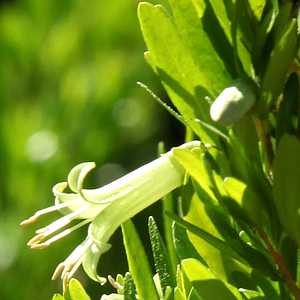
Mary Fisher, APLD • Mary Fisher Garden Design •
Alameda, CA • maryfishergardendesign.com
- Acacia boormanii, Snowy River Wattle: This is a versatile large shrub that can be easily trained as small multitrunked tree. I often use it along property lines for a soft screening effect. Drought tolerant but also will deal with poor drainage.
- Correa glabra ‘Coliban River’, Coliban River Rock Fuchsia: A great “bridge plant” that can tolerate a big range of sun exposure. I’ve been using this as a boxwood substitute in more formal designs where I want a low natural hedge. The flowers are subtle but very lovely.
- Erodium reichardii, Alpine Geranium: This delicate looking little gem is surprisingly tough and drought tolerant. They even work well in parking strips were they receive regular foot traffic and very irregular watering. They are perfect little plants to use between pavers and in other narrow spots.
- Frangula (Rhamnus) californica ‘Mound San Bruno’, San Bruno Coffeeberry: This is the most dependable Californian that I regularly specify. It is so versatile that it can be used in many mini-microclimates on one site: sun, shade, dry, not-so dry, etc. Very “clean and green” all year long. Best if you give it plenty of space to do its own thing (which can be up to 6 feet tall and twice as wide!). But it can also be espaliered in narrow spaces to great effect.
- Senecio barbertonicus, Succulent Bush Senecio: Fast and easy—a nice light green succulent shrub that makes a wonderful filler plant in sun and part shade conditions. Just crack off a piece and stick it in a bare spot in a garden and in a month or so you will have a lovely 3 by 3 foot lime green mound.
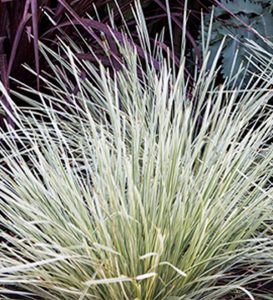
Katie Creighton • Katie Creighton Garden Design •
Oakland, CA • kcgardendesign.com
- Cordyline banksii ‘Electric Star’, Electric Star Grass Tree: I like it because the variegated leaves offer a vibrant color combination all year long that mixes well with most other plants. Also, it adds upright structure, and is a dependable grower.
- Lomandra longifolia ‘Platinum Beauty’: I like it because it is soft mixer with other plants, and maintains its shape, structure, and color year round.
- Dianella ensifolia ‘Sterling’, Sterling Flax Lily: Its striking green/white variegated leaves brighten up any planting, especially in partial shade/shade.
- Lavandula ×intermedia ‘Provence’, Provence French Lavender: A common plant, but a workhorse in any sunny spot. Makes a great small hedge.
- Crassula ovata ‘Hummel’s Sunset’, Golden Jade Tree: Another year round, low maintenance plant with dependable, cheery-colored foliage. A good contrast to upright, spiky plants.

Michal Commanday • Garden by Michal •
Walnut Creek, CA • gardenbymichal.com
- Westringia ‘Wynyabbie Highlight’, Variegated Australian Rosemary: A 3 to 4 foot rounded Australian rosemary, with cream margins on the leaves, this shrub contrasts well with darker green shrubs and lights up against a fence.
- Lomandra longifolia ‘Katrinus Deluxe’: This is a very sturdy, bright green 3 by 3 foot grass that maintains its color even in the hot summer sun — it is said to tolerate part shade as well.
- Salvia leucophylla ‘Point Sal’, Point Sal Purple Sage: I use this plant on my dry, deer-browsed sloped bank where it provides a bright silvery counterpoint to Mexican marigold and other sages.
- Asteriscus maritimus, Gold Coin Daisy: Sweet, mounding silvery leaved rock-garden plant with lots of neat, yellow daisy flowers.
- Grevillea rhyolitica ‘Deua Flame’, Deua Flame Grevillea: I’ve just started growing this medium green-leaved 4 by 4 foot shrub, which seems to stay tidy with drooping red flowers that have been blooming since September!

Linda Middleton, APLD • Terralinda Design •
Walnut Creek, CA • terralindadesign.com
- Myrsine africana, African Boxwood: A tough, very adaptable shrub to use in inland gardens, especially with reflected heat. It shapes well and I often use it in more traditional landscapes. It’s great as a foundation shrub and soft enough to use along pathways. It’s a slow grower and tolerates sun and shade.
- Verbena bonariensis ‘Little One’, Dwarf Purple Top: A diminutive form of its parent Verbena bonariensis. I love using this instead of lavenders in places where I want continuous bloom all summer plus butterflies love it! I have not seen it reseed like its parent.
- Dudleya brittonii, Giant Chalk Dudleya: Perfect for growing in rock walls, the brilliant white leaves are a showstopper. Delicate coral blooms sit atop wiry stems. In Zone 14, it will tolerate extreme drought and intense sun, but is much happier when shaded in the afternoon and an occasional drink of water in the dry months.
- Bouteloua gracilis ‘Blonde Ambition’, Blonde Ambition Grama Grass: One of my favorite go-to grasses. It’s a California native (+), is small and compact (+), easy to groom (+), and is just a delight in the garden (+)! Love using it with low growing sages for a simplified meadow look.
- Calylophus drummandianus, Sundrops: Mounds and mounds of yellow primrose like flowers nearly year-round. No dead heading needed! Its green leaves are a nice contrast to grayer leaved drought tolerant plants. It’s a bit brittle so keep it a few feet back from pathways.
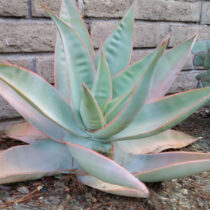
Tina Roushall • Roushall Gardens •
Redwood City, CA • roushallgardens.com
- Salvia greggii, Autumn Sage: So many colors to choose from. I can always find one that fits into whatever sunny garden palette I’m working with.
- Westringia fruticosa ‘Low Horizon’, Low Horizon Westringia: A perfect-sized Westringia for the smaller gardens.
- Aloe striata, Coral Aloe: A great plant for hummingbirds with a nice coral bloom, and I can push to the shadier side of the garden.
- Aeonium ‘Starburst’: A great succulent that adds a splash of color to the garden.
- Correa ‘Carmine Bells’, Australian Fuchsia: A nice low shrub that I can use sun to shade.
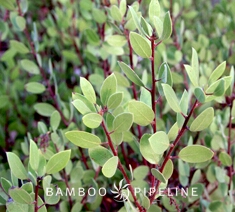
Cathy Edger • Edger Landscape Design •
Novato, CA • edgerlandscapedesign.com
- Yucca filamentosa ‘Color Guard’, Adam’s Needle: This is great for adding color to low-water-use gardens. The yellow leaves edged with olive green are flushed with red during winter months, which increases their interest during a challenging time of the year.
- Salvia chamaedryoides, Mexican Blue Sage: I like to group this alongside accent plants (such as Yucca ‘Colorguard’) for textural contrast. The cobalt blue flowers really pop nicely and play well with other full-sun plants.
- Dymondia margaretae, Silver Carpet: I love using this as a weed suppressing ground cover. It grows in thickly, and once it is established does an excellent job of preventing weed seeds from sprouting. It’s a great “chorus” plant to back-up the “stars” in my designs.
- Arctostaphylos bakeri ‘Louis Edmunds’, Serpentine Manzanita: This is one of several manzanitas that can be pruned up to show off its legs and provide a wonderful small-scale focal point. Delicate winter flowers add to its interest.
- Heteromeles arbutifolia, Toyon: This is a wonderful CA native habitat shrub! Its July flowers attract tons of bees and other pollinators. In November the number of birds feeding on the berries can be epic, leading the observer to believe an air traffic controller would be a pretty good idea!
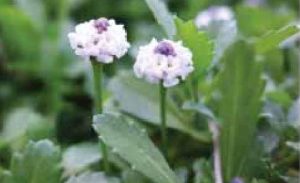
Diane Goldsmith • Square Moon Design •
Orinda, CA • diane@sqmoon.net
- Echium wildpretii ‘Tower of Jewels’: This is one of the most amazing plants for a garden with some space in it. It is deer resistant, bug proof and totally drought tolerant. A hummingbird magnet, the plant self-sows for years of enjoyment. Bees, and therefore beekeepers, love this plant for its generous nectar supply.
- Lippia nodiflora ‘Kurapia’: This is a great lawn replacement. It is really beautiful during the summer when it flowers profusely. The plant is noninvasive in the sense that its flowers are sterile, but it is a bee magnet.
- Dudleya brittonii, Giant Chalk Dudleya: This California native is dramatic. I like this plant as an accent, drawing light into a dark space. It likes a sunny location, especially on the coast, and is a great specimen for a container. Make sure to give it excellent drainage.
- Manfreda ‘Macho Mocha’: This sharp-looking succulent is really a softy. Its leaves are tender at the tips, so it is easy to put this in a garden where people will walk nearby. These plants thrive in sun or shade, but prefer a little afternoon shade in the hottest locations.
- Lomandra ‘Platinum Beauty’, Variegated Mat Rush: This is a new hybrid, with light green strap-shaped leaves that have a white central stripe and white margins. It lightens up a garden space with a graceful elegance and blends beautifully with gray-green Mediterranean plants. Deer resistant and very drought tolerant, it thrives in sun or light shade.

Anna Wendorf • Anna Wendorf Design •
Cowell, CA • annawendorfdesign.com
- Eremophila glabra ‘Mingenew Gold’: I use this arching groundcover all the time. I love its yellow flowers and how easy and fast growing it is.
- Grevillea ‘Jade Mound’: This plant looks great in contemporary landscapes. I love its soft green leaves. Great spaced 3 feet apart and underplanted with a low Myoporum.
- Callistemon viminalis ‘Slim’: This one is great for narrow space screening, reaching 8 to 10 feet tall but only 3 to 4 feet wide. It is fast growing & deer ignore it.
- Ceanothus maritimus ‘Valley Violet’, Santa Barbara ceanothus: One of my favorite natives—it is tough and reliable. It is more compact than most ceanothus and is great for small spaces. Attracts all sorts of pollinators.
- Verbena lilacina ‘De La Mina’ Purple Cedros Island Verbena: I just love this soft mound of lavender flowers. It remains in flower for most of the year, which is great for all native gardens. Very attractive to bees and butterflies.

Tina Henricksen • Tina Henricksen Garden Design •
Roseville, CA • tinahenricksen@gmail.com
- Westringia fruticosa ‘Smokey.’ Smokey Coast Rosemary: This medium-sized compact evergreen shrub grows up to 4 to 6 feet tall and wide. It likes full sun/partial shade exposure. Its soft, silvery and white variegated foliage is beautiful in a mixed border. Small white flowers show up in early summer. It has low water needs.
- Juniperus scopulorum ‘Blue Arrow,’ Blue Arrow Juniper: This is one of my favorite conifers for small, narrow spaces. It has an upright form with bright blue foliage and is a colorful evergreen addition to the garden. It grows up to 12 to 15 feet tall by 2 feet wide and shows its colors best in full sun. Wildlife love it, too!
- Miscanthus sinensis ‘Yakushima Dwarf,’ Dwarf Maiden Grass: A compact version of the regular maiden grass, great accent in smaller gardens. It grows to 3 to 4 feet tall by 3 feet wide, prefers low water and full sun. It has beautiful fine-textured silvery-green foliage with pinkish-brown plume like panicles. I like to use it in the back of borders and nestled among boulders.
- Bouteloua gracilis ‘Blonde Ambition,’ Blonde Ambition Blue Grama Grass: This low water, native ornamental grass has lovely blue-green foliage and long-lasting blonde seed heads. I use it clustered near swales. It’s semi-evergreen, performs well in partial to full sun and grows to 3 feet tall and wide.
- Verbena lilacina ‘De la Mina,’ Cedros Island Verbena: I love this airy, mounding evergreen shrub with deeply divided, medium green leaves and fragrant lavender-blue flowers. It blooms for months on end and is a magnet for butterflies and bees. It looks beautiful in native, dry gardens, within borders and in containers. It does best in full sun, grows to 3 feet tall and wide and prefers low water.
Share:
Social Media
Garden Futurist Podcast
Most Popular
Videos
Topics
Related Posts

Low Maintenance Gardens – Better for Pollinators and People
Autumn 2022 “I come out every day. It’s therapy, my meditation.” Janet’s young garden transformed from overgrown, invasive plants to mostly natives. The dailiness of

Invasive Plants Are Still Being Sold: Preventing Noxious Weeds in Your Landscape
Autumn 2022 With so many beautiful ornamental plant species and cultivars throughout California and the Pacific Northwest, how do you decide which ones to include

Garden Design in Steppe with Transforming Landscapes with Garden Futurist Emmanuel Didier
Summer 2022 Listen to full Garden Futurist: Episode XVII podcast here. Emmanuel Didier, Principal and Creative Director at Didier Design Studio is a leading figure
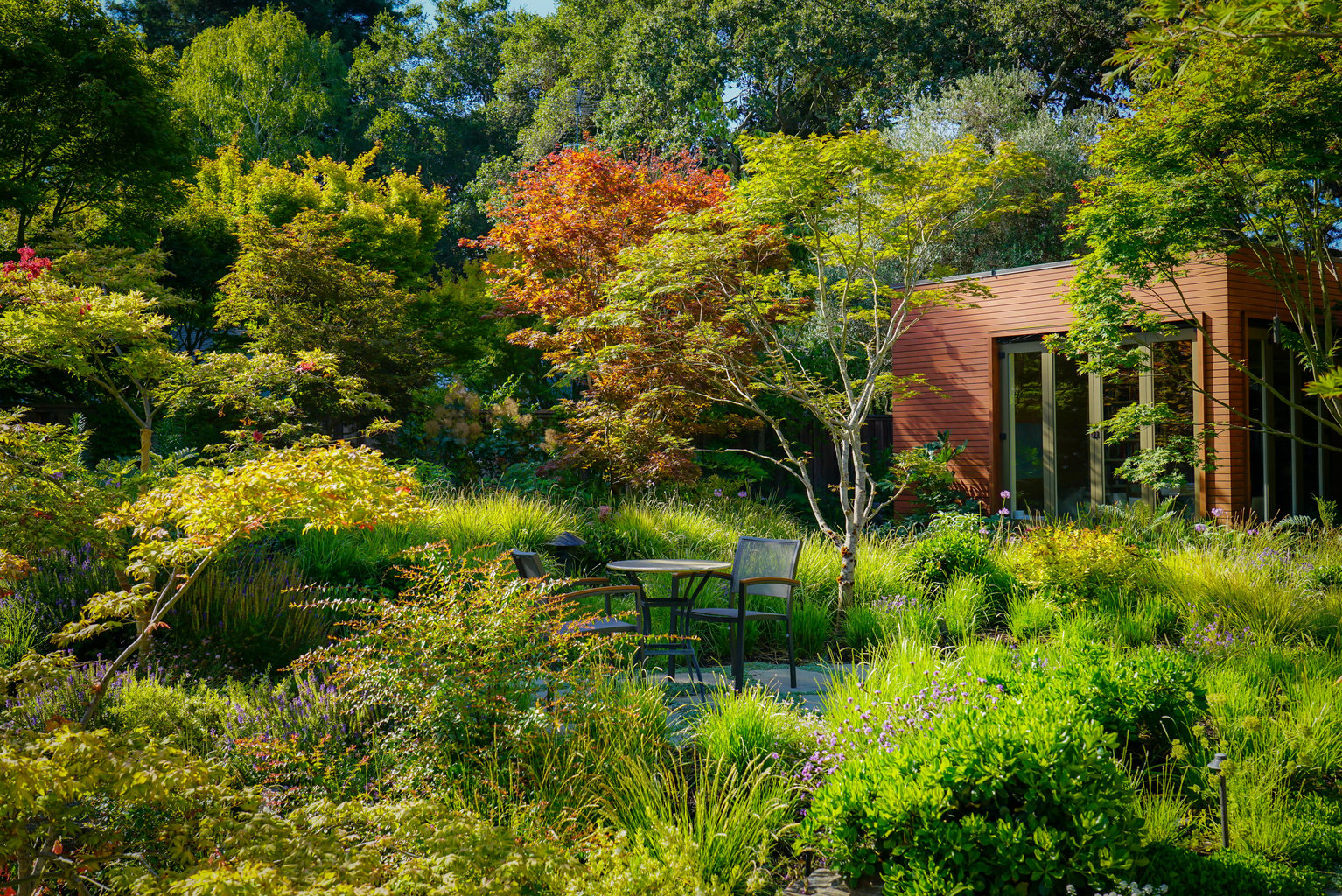
Seslerias: Versatile Groundcover Meadow Grasses
Summer 2022 Without question, the most beautiful and versatile of all the groundcover meadow grasses are the moor grasses (Sesleria). Moor grasses tick off all









